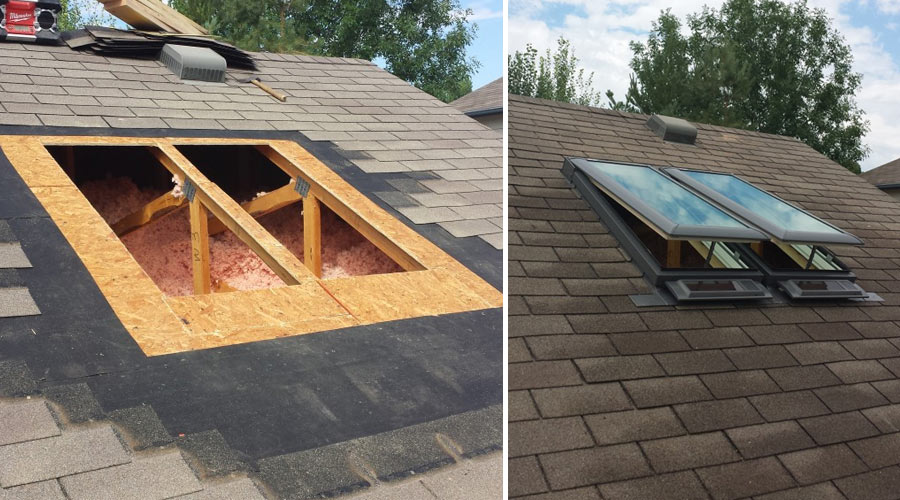5 Things to Consider When Installing a Skylight

With the right location and the right skylight, you can help minimize your heating, cooling, and lighting costs. Consider these 5 things and it will help you maximize the benefits of a skylight.
-
- The size of the skylight will affect the light and temperature in the room below. According to energy.gov the size of a skylight in a room with several existing windows should be no larger than 5% of the floor area. In a room with fewer windows it should be no more than 15% of the floor area.
-
- Location, location, location. Whether you want to maximize passive solar heating or get the most light throughout the day, location is key. A north facing location will get consistent light and less heat gain. East facing will get you maximum light and solar heat gain in the mornings. Afternoon light and heat gain with a west facing skylight placement. A south facing location will provide the best light and solar gain in the winter, but usually undesirable heat gain in the summer. Trees can help reduce unwanted heat gain, as can blinds.
-
- Consider where you live and the pitch of your roof. The angle of the skylight will affect light and solar gain as well. Depending on your location a lower slope can let in more heat in the summer than in the winter. A general rule of thumb is to add 5 to 15 degrees to your location’s latitude to get the perfect slope for your skylight. Fort Collins is at 40.5° north latitude so the ideal slope would be 45.5° to 55.5° for a south facing installation. Check with an installer to see if an increased angle is necessary.
-
- Find out how your roof was framed. If it’s with trusses check the spacing, trusses are typically 24 inches on center, which can accommodate a 2 foot wide skylight. Anything wider and you’ll need a structural engineer to plan alternative framing. Just the engineer alone could add about $500 to your project not including the extra cost for the additional construction. Refer to number 1 for the importance of the size of skylight.
- Know your material options. The two most common glazing options are plastic or glass. Plastic is the inexpensive option, but is not as energy efficient and durable as laminated glass. It’s susceptible to breaking in a hail storm and easily scratched. Also, as it ages it can discolor and become brittle. It’s important to make sure the plastic has a special coating to keep UV rays out, which can fade interior furnishings over time. In some cases glass may be a more expensive option, but will not discolor over time. It is also required to be a safety glazing material. Glass skylights are available in a variety of glazing options, each designed to meet the needs of specific building situations; offering UV protection, durability and energy efficiency. Tempered glass is the most impact resistant and what they use in cars. Laminated glass has a thin layer of plastic at the center of the pane and in both cases it keeps the glass from breaking into large pieces. Usually skylights have tempered glass on the outside and laminated on the interior side.
Considering these options can save you a lot headache and give you the most efficiency for your home.
